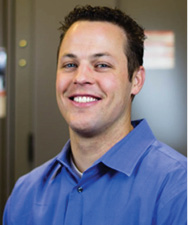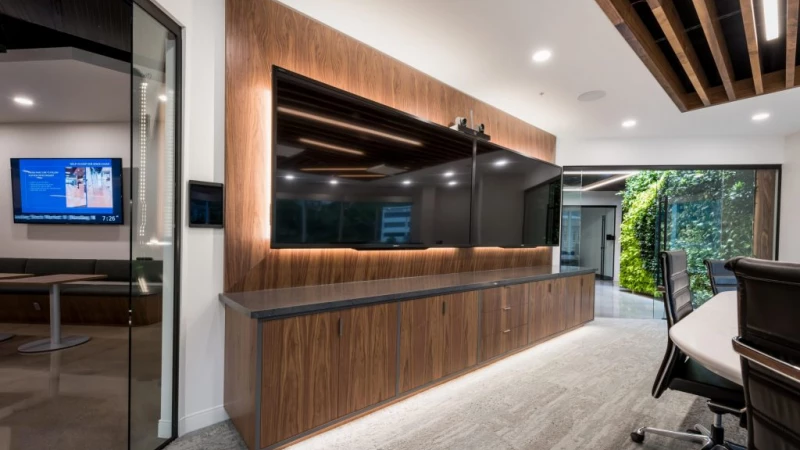Offices are designed for in-person meetings and team collaboration. Workspaces have even changed to open work environments to allow for greater team collaboration. But when offices moved to the home due to the COVID-19 pandemic, companies had to adjust on the fly. Eight months later, we are still learning to adapt our business to the “new norm”, a hybrid set up of work from home and office.
When companies were looking to augment their video conferencing, they turned to our team at Hunt Electric for help. EDCUtah is one of the organizations who we helped to reevaluate their AV set up. Their main goal was to assure an easy and safe transition to a COVID prevention-friendly work environment.
Before the pandemic, EDCUtah was equipped for video conferencing in their conference room, but they were not using it often. While their previous setup worked in the rare instances it was needed, it did not allow for social distancing if multiple staff were present. We worked with EDCUtah’s budget and strategized the best solution for them to transition to a more effective video conferencing practice.
Now, the EDCUtah’s office has a fully-immersive video conferencing experience. Anyone in the conference room can be seen on video and be heard through microphones located throughout the room. There is no need to huddle around a laptop anymore. The team can safely socially distance while still conferencing effectively with coworkers or clients.
Hunt Electric’s expertise was critical in helping us transition to a better video conferencing system once the pandemic hit. We knew we would need to more effectively manage virtual site visits with participants from around the globe on a regular basis, and Hunt’s technology and AV team helped us pick the best equipment, get it installed ASAP and make sure our entire team was trained in its operation. We couldn’t be happier with our new system, stated Theresa Foxley, President/CEO of EDCUtah.
Video Conferencing
As was the case for EDCUtah and many other companies in the last eight months, video conferencing has been a solution for client meetings and team collaboration. In fact, being able to meet without the time for travel has allowed for greater efficiencies in many offices, but video conferencing does not come without its concerns.
One of the greatest challenges of video conferencing is deciding which software to use. There are Zoom, Microsoft Teams, Cisco WebEx, Skype and so many more. Throughout the pandemic, you have probably used a combination of these. If your breakout room is designed for video conferencing, it is more than likely set for one specific video-conferencing application, but some solutions allow for a full room immersion, multiple video conferencing platforms and touchless presentations.
Conference Room Solutions
There is not a one-size-fits-all solution for any company when it comes to video conferencing. For example, EDCUtah went with a fully immersive option that is run off a laptop. But for another company, they might not want to use a BYOD solution. For those companies, there are video conferencing systems.
One solution to many video conferencing needs is a tabletop conferencing system. These systems can be set up in a breakout room, executive suite or huddle space. You can use these systems for touchless presentations controlled by your phone, full room immersive video conferencing and, if your room is wired for lights, shades, climate control, etc., they can control those as well. Launching in the first quarter of 2021, Crestron will have a solution for large conference or training rooms as well.
Conclusion
Remote conferencing is here to stay, regardless of if employees and teams are working in an office or not. Close more deals and increase team collaboration through a video conferencing system that works and meets your needs by evaluating your current system and seeing where you can simplify or ease your process. The effects of a simple change can make a big difference in the quality of video calls and user experiences.

By Kade Hanks
Kade Hanks is an Audio-Visual Engineer for Hunt Electric with over 15 years of experience in the AV industry.
